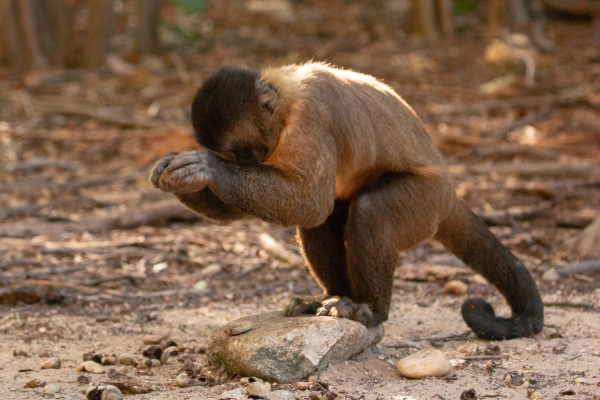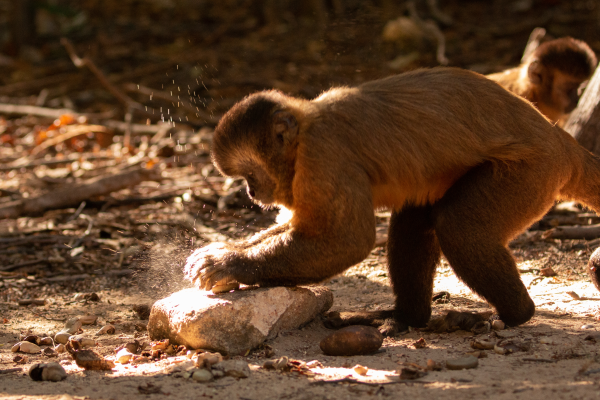First example of long-term tool-use variation outside of the human lineage
Published: 25 June 2019
Study identifies changing tool-use in capuchin monkeys.

The human archaeological record changes over time. Finding such change in other animals requires similar evidence, namely, a long-term sequence of material culture. Monkeys and chimpanzees, as well as other animals such as otters are all known to use stones in the wild to crack open nuts and shells. However, until now, chimpanzees were the only non-human animal with a known archaeological record.
In a study led by Tomos Proffitt (UCL), with contribution from Richard Staff (SUERC), archaeological excavation techniques were applied to a wild capuchin monkey (Sapajus libidinosus) site in Serra da Capivara National Park, Brazil, where monkeys today use stones to crack open cashew nuts.
Using radiocarbon dating and stone-tool analysis, the study identifies:
- the oldest non-hominid evidence of stone tool use yet discovered, with monkeys at the site having been doing this for the last ~3,000 years (or ~450 generations).
- the first evidence of a demonstrable change in tool use outside of the human lineage.
During the earliest phase at the site, which began 3,000 years ago, monkeys used smaller and lighter stone tools. From 2,500 to 300 years ago, the capuchins using bigger and heavier stones to process foods. They then reverted to slightly smaller tools in the most recent period, which is associated with the cashew-processing of today.

The authors suggest that the changes in tools used may be explained by several theories: different capuchin groups could have varied tool use; or that before cashews became more available, different foods could have required different sized tools for processing.
The full article is published in Nature Ecology and Evolution.
Photo credit: Dr Tiago Falótico, University of São Paulo
First published: 25 June 2019
<< News

